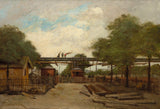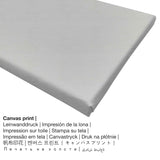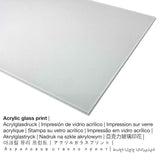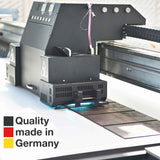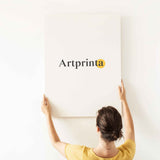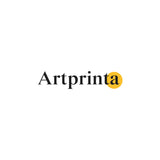Paul Désiré Trouillebert, 1888 - Mwube nke okporo ụzọ ụgbọ oloko dị elu: Bridge over the Cours de Vincennes - ọmarịcha nka.
Ụtụ gụnyere. Mbupu gbakọrọ na ndenye ọpụpụ.
Ozi gbasara akụkọ a
The nkà nke oge a ihe omimi Construction of an Elevated Railway: Bridge over the Cours de Vincennes was painted by the artist Paul Désiré Trouillebert. The 130 year-old version of the artpiece was painted with the size - Emebereghị: 38,2 x 56 cm (15 1/16 x 22 1/16 na). Mmanụ na akwa ákwà E tinyere onye na-ese ihe na Europe dị ka onye na-emepụta ihe osise. Signed lower left: Trouillebert is the masterpiece's inscription. Nowadays, this artpiece can be viewed in in the Ụlọ ihe ngosi nka nke Cleveland nchịkọta nka dijitalụ na Cleveland, Ohio, United States of America. Site n'ikike nke - The Cleveland Museum of Art (ikikere: ngalaba ọha). The creditline of the artpiece is: Bequest of Noah L. Butkin. In addition to that, the alignment is in odida obodo format ma nwee oke nke 3: 2, nke pụtara na ogologo bụ 50% ogologo karịa obosara.
Nweta ụdị ngwaahịa dị iche iche masịrị gị
Maka mbipụta nka ọ bụla anyị na-enye nha & ihe dị iche iche. Họrọ n'ime nhọrọ ngwaahịa ndị a ugbu a ka ị kwekọọ na mmasị gị na nha na akụrụngwa:
- Akwụkwọ mmado ebipụtara (akwa akwa akwa): Our poster print is a printed canvas with a fine texture on the surface, that resembles the actual masterpiece. It is used for framing the art replica with the help of a custom frame. Please bear in mind, that depending on the absolute size of the poster we add a white margin of something between 2-6cm around the work of art, which facilitates the framing with your custom frame.
- Mbipụta nke aluminom: This is a metal print manufactured on aluminium dibond material with an outstanding depth. The Direct Print on Aluminum Dibond is your ideal introduction to art replicas with aluminum. The colors are bright and luminous in the highest definition, the details appear crisp, and you can notice the matte appearance of the art print surface.
- Mbipụta kwaaji: The canvas print is a printed cotton canvas stretched on a wood frame. Additionally, a printed canvas creates a soft and pleasing appearance. A canvas print of this artpiece will give you the unique opportunity of turning your custom into a large artpiece. Canvas prints are relatively low in weight. That means, it is quite simple to hang up the Canvas print without any wall-mounts. That is why, canvas prints are suitable for any type of wall in your house.
- Mbipụta iko acrylic (nke nwere ezigbo mkpuchi iko): An print on acrylic glass, which is often named as a fine art print on plexiglass, will change your favorite original into brilliant home decoration. Your favorite artwork is being made with the help of modern UV print technology. This creates stunning, intense colors. The major advantage of an acrylic glass art print is that contrasts and small artwork details become exposed with the help of the precise gradation.
Ihe dị mkpa: We try the best we can to depict our products as exact as possible and to illustrate them visually on the respective product detail pages. Nevertheless, the tone of the print products, as well as the print result can diverge to a certain extent from the presentation on your device's screen. Depending on the settings of your screen and the condition of the surface, colors can unfortunately not be printed one hundret percent realistically. Bearing in mind that all art prints are processed and printed manually, there might also be minor differences in the motif's size and exact position.
Ihe nkọwa
| Nkewa edemede: | nka nka |
| Mmeputakwa: | dijitalụ mmeputakwa |
| Production usoro: | Mbipụta UV ozugbo (mbipụta dijitalụ) |
| Ihe ngosi: | German mere |
| Ụdị ngwaahịa: | a na-achọ |
| A na-atụ aro iji ngwaahịa eme ihe: | mgbidi mgbidi, foto mgbidi |
| Ndozi onyonyo a: | nhazi odida obodo |
| Oke akụkụ: | 3: 2 (ogologo: obosara) |
| Nkọwa nke oke ihe onyonyo a: | ogologo bụ 50% ogologo karịa obosara |
| Akwa ngwaahịa dị: | ígwè obibi akwụkwọ (aluminium dibond), akwụkwọ mmado (akwụkwọ kwaaji), mbipụta enyo acrylic (nke nwere ezigbo mkpuchi iko), mbipụta akwụkwọ. |
| Mbipụta kanvas (akwa akwa na etiti ihe ndọtị) dị iche iche: | 30x20cm - 12x8", 60x40cm - 24x16", 90x60cm - 35x24", 120x80cm - 47x31", 150x100cm - 59x39" |
| Acrylic glass print (nwere ezigbo mkpuchi iko) nhọrọ: | 30x20cm - 12x8", 60x40cm - 24x16", 90x60cm - 35x24", 120x80cm - 47x31", 150x100cm - 59x39" |
| Mpempe akwụkwọ mmado (akwụkwọ kwaaji) nha: | 60x40cm - 24x16", 90x60cm - 35x24", 120x80cm - 47x31" |
| Nhọrọ nha nha nke Dibond (ihe alumnium): | 30x20cm - 12x8", 60x40cm - 24x16", 90x60cm - 35x24", 120x80cm - 47x31" |
| Nhazi mmeputa nka nka: | enweghị etiti |
Ozi ndabere na ọrụ nka
| Aha nke eserese ahụ: | "Construction of an Elevated Railway: Bridge over the Cours de Vincennes" |
| Nhazi nka: | sere |
| Otu izugbe: | nkà nke oge a |
| oge: | 19th narị afọ |
| Emepụtara n'afọ: | 1888 |
| Afọ nka: | ihe karịrị afọ 130 |
| Ọkara nke ihe osise izizi: | mmanụ na akwa ákwà |
| Nha izizi: | Emebereghị: 38,2 x 56 cm (15 1/16 x 22 1/16 na) |
| Akara mbinye aka: | signed lower left: Trouillebert |
| Ụlọ ihe ngosi nka: | Velọ ihe ngosi nka nke Cleveland |
| Ebe ngosi nka: | Cleveland, Ohio, United States nke America |
| Weebụsaịtị ihe ngosi nka: | Velọ ihe ngosi nka nke Cleveland |
| License: | ngalaba ọha |
| Site n'aka: | Velọ ihe ngosi nka nke Cleveland |
| kreditline ọrụ nka: | Arịrịọ nke Noa L. Butkin |
Onye na-ese ihe
| Aha onye nka: | Paul Désiré Trouillebert |
| Obodo onye nka: | French |
| Ọrụ: | onye na-ese ihe |
| Country: | France |
| Nhazi nke onye nka: | omenkà nke oge a |
| Nwụrụ na afọ nke: | 71 afọ |
| Amụrụ n'afọ: | 1829 |
| Afọ ọnwụ: | 1900 |
Copyright right, www.artprinta.com (Artprinta)
General description as provided by The Cleveland Museum of Art (© - The Cleveland Museum of Art - Velọ ihe ngosi nka nke Cleveland)
Conceived in 1851, after Napoleon III came to power, the railway encircling Paris was intended to transport merchandise and, eventually, passengers. The railway represented a new convenience, but measures were needed to ensure the safety of other traffic. The numerous railway crossings included in the initial plans turned out to be a source of fatal accidents. To remedy the problem, the platforms and retaining walls were to be raised at the most dangerous spots. The Cours de Vincennes, in the eastern part of Paris, had been one of the deadliest intersections. The work on an elevated railway bridge over this street, which is depicted here, was completed in February 1889. Trouillebert concentrated on portraits until about 1881, when he began to focus on landscapes. He also painted everyday scenes and nudes. He was commissioned by Edme Piot, a public works contractor, to paint this and four related views of the Paris railway construction.

